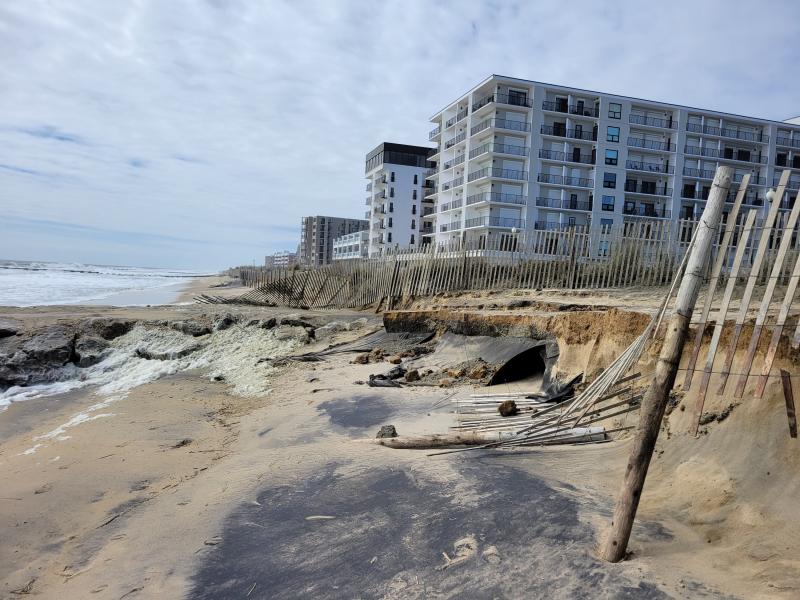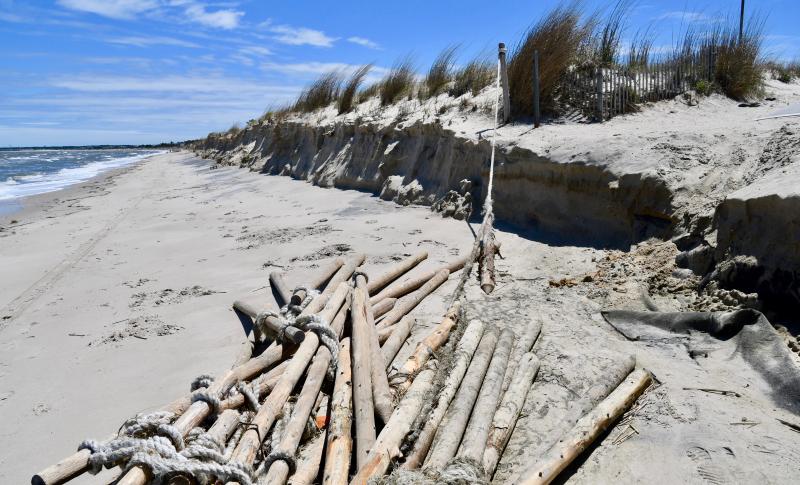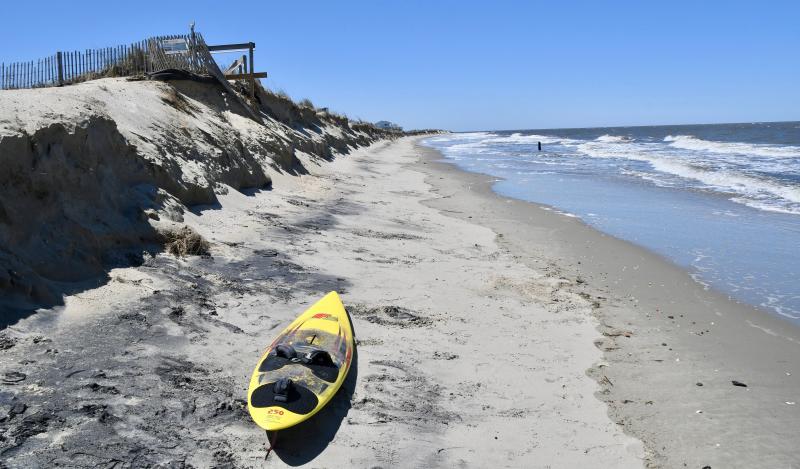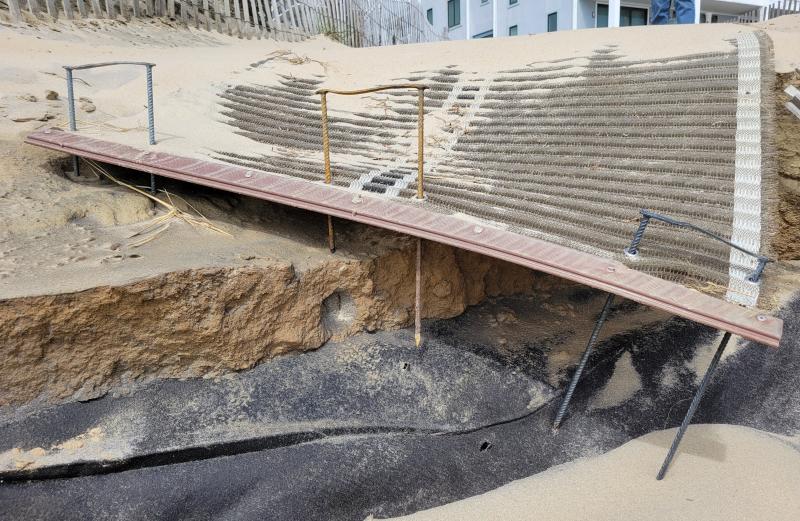DNREC crews begin to repair storm damage
Having recently completed beach nourishment projects in five Delaware Bay beach communities, the Delaware Department of Natural Resources and Environmental Control has begun the next phase of restoring parts of Delaware’s coastline, including the beaches that experienced widespread erosion and damage from a May 8 nor’easter.
“Our shoreline team will be hard at it for the foreseeable future on beach restoration priorities that this storm handed us,” said DNREC Secretary Shawn M. Garvin. “While restoring the beaches will not be instant or easy, we are confident of surmounting the challenge ahead. We’re working on making the state’s beaches accessible and in shape for the summer.”
“The damage done to our beaches by the recent nor’easter makes clear that robust federal, state and local partnerships are needed now more than ever,” said U.S. Sen. Tom Carper, chair of the Senate Environment and Public Works Committee.
Included in the 2022 Water Resources Development Act are provisions for emergency authority to allow the U.S. Army Corps of Engineers to help restore beaches in the aftermath of storms; a requirement that the federal government pay 90% of the costs of the bay beach nourishment project; and a reorientation of the corps’ civil works program to proactively address climate change and streamline the implementation of shoreline protection and restoration projects.
Bay beach nourishment
DNREC recently completed a beach nourishment project in the Pickering Beach, Kitts Hummock, Bowers, South Bowers and Slaughter Beach communities. This project used approximately 52,650 cubic yards of sand – enough to fill almost 11 Olympic-sized swimming pools. The next restoration phase spans the majority of the state’s coastline and will require DNREC to partner with the Army Corps of Engineers and affected communities to restore the coastline.
“The long duration of the storm and the post-storm wind direction mean we may not see a rapid natural rebuilding of the beach,” said DNREC Shoreline and Waterway Section administrator Jesse Hayden. “The dunes did their job protecting our communities from being inundated, but by absorbing the impact of the storm, they suffered damage that affects people’s ability to access the beach. Our immediate goal is restore as much safe beach access in as many communities as possible so that beachgoers can enjoy a safe and enjoyable Memorial Day weekend.”
DNREC’s post-storm work has begun in South Bethany, the community worst hit by the storm, and restoration work will then move south to north. At each juncture, DNREC crews will clean up debris such as smashed dune fencing and will re-grade numerous access crossings. DNREC crews are also working on a nourishment project north of the Indian River Inlet, which lost significant sand from the dune critical to protecting the roadway and the Indian River Inlet bridge.
“The first pass made by our team will focus on cleanup and restoring access,” Hayden said. “When that work is done, we will begin repairing the damaged dune fence.”
Several bay beach communities experienced minor impacts from the more recent nor’easter that caused widespread erosion on both coasts – some of the truck-hauled sand from that project was moved around and lost because of the storm.
Work in Lewes
According to DNREC officials, storm cleanup work will be done in Lewes, with the city taking on some of the debris cleanup and grading of access points, while DNREC crews will do additional grading and cleanup work. DNREC also will add small quantities of sand as needed to improve the condition of dune crossovers.
Officials said a lot of the dune erosion that can be seen in Lewes is a natural adjustment of a dune that had, over time, gotten very wide in some parts of the beach. “The vertical dune scarp after a storm looks dramatic, but is not a cause for concern,” said DNREC spokesman Michael Globetti.
“Nature will soften the slope over time, and the sand that was in the dune is now on the beach or in the nearshore where it is valuable for recreational activities. DNREC will continue to evaluate the beach and dune conditions in Lewes and throughout the Delaware Bay shoreline in making plans for future nourishment work that aims to mitigate vulnerability to coastal storms,” he said.
Lewes is scheduled for beach nourishment in the project area near Roosevelt Inlet in fall 2023. This is an Army Corps of Engineers project, with DNREC as the non-federal sponsor.
Upcoming projects
Future nourishment is planned along both the Atlantic Ocean and Delaware Bay coastlines. Along the Atlantic Ocean, large-scale nourishment projects in partnership with the Corps of Engineers will include Rehoboth Beach, Dewey Beach, Bethany Beach, South Bethany and Fenwick Island. Along Delaware Bay, DNREC will perform small-scale nourishment to further fortify the most vulnerable sections of shoreline.
More information about the work of the Shoreline and Waterway Management Section can be found at de.gov/shoreline. More information on beach nourishment is available from Outdoor Delaware at de.gov/outdoordelaware.
























































